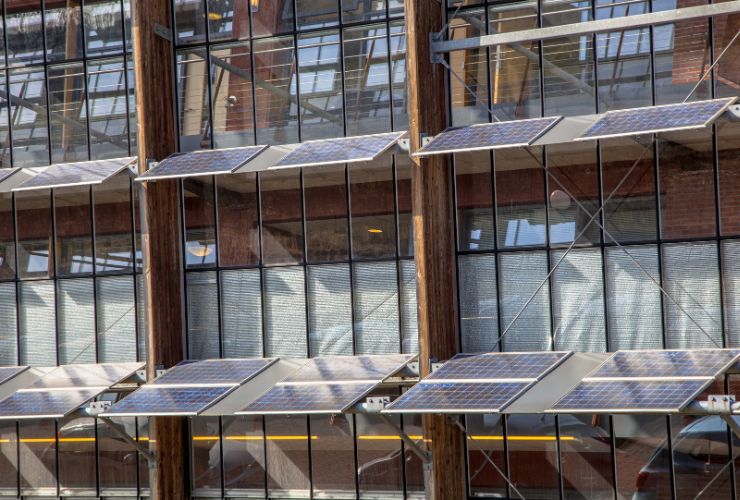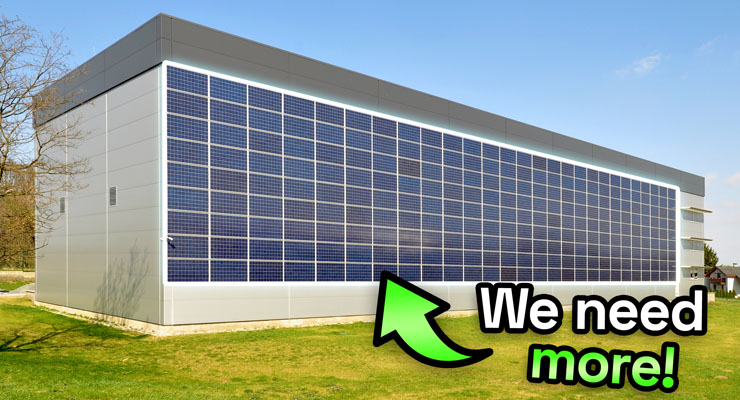Fast read
Building Integrated Photovoltaics (BIPV) is a modern method of integrating solar panels into building materials. This creates a seamless blend of architecture and energy production.
BIPV systems are unique as they combine solar panels with a building's design, enhancing how it looks and works.
Buildings are no longer just places to live or work. They can also contribute to sustainable energy generation. This change highlights the evolving role of buildings in society. They are now recognised for their potential to support environmental goals.
Harnessing the power of solar-integrated buildings
In today’s world, it’s important to use sustainable solutions. Adding solar panels to buildings combines new architecture with caring for the environment. Envision cityscapes where every window, wall, or skyscraper not only stands as a testament to human ingenuity but also as a beacon of renewable energy technology. This transformative concept, termed Building Integrated Photovoltaics (BIPV), while promising, is riddled with complexities.
What is BIPV?
Building Integrated Photovoltaics (BIPV) is a smart way to use solar energy. This is done by incorporating solar panels into building materials. This is instead of placing them on top of buildings. This means that buildings can both provide shelter and generate renewable energy at the same time.
The great thing about Building Integrated Photovoltaics is that it can be designed to match different building styles, whether it’s a home, office, or public building. Property owners can save money and reduce their carbon footprint by using less electricity from the grid.
Another benefit of Building Integrated Photovoltaics is its long-term financial advantage. While it might cost more upfront, Building Integrated Photovoltaic systems can lead to lower maintenance costs and increase property values over time.
In cities where space is limited, Building Integrated Photovoltaics offers a solar solution to generate energy without taking up extra space. Building Integrated Photovoltaics helps cities become more environmentally friendly and less dependent on central power grids. This is achieved by installing solar panels on building facades, windows, and roofs.
Building Integrated Photovoltaics is a smart and sustainable way to design buildings. It also helps produce clean energy for a brighter future.
Unpacking the challenges
For BIPV to transition from concept to mainstream reality, several challenges need addressing:
Energy efficiency dynamics: Solar efficiency is a key determinant in the viability of any solar product. Rooftop solar panels enjoy the flexibility of being oriented for optimal sun exposure.
BIPV systems, on the other hand, especially those embedded in vertical structures like windows, inherently face limitations. Their positioning, dictated by architectural considerations, might compromise sun exposure.
When it comes to panels on windows, it can be difficult to balance clarity and energy capture. Transparent surfaces like windows pose a challenge in finding this balance. It can be hard to efficiently capture energy while maintaining clarity on these surfaces.
Economic implications: Innovations come with price tags. Tailor-made to fit into building materials, Building Integrated Photovoltaics solar panels often command higher prices than conventional ones. Beyond the material costs, the incorporation of BIPV systems necessitates specialised design, engineering, and installation expertise, further inflating initial investment figures.
Balancing aesthetics with functionality: Buildings, especially iconic ones, are often expressions of artistic visions. While BIPV promises integration, it might challenge established aesthetic paradigms. The task is to harmonise the visual appeal of structures with the practicality of embedded solar PV systems.
Structural and technical issues: When putting solar tech on buildings, the materials need to stay strong while making space for the extra parts that make power. It’s even tougher to do this in older buildings that weren’t built for solar panels. They might need major changes to their structure and electrical systems.
Policy and regulatory hurdles: New technologies can sometimes be ahead of the building codes in place. The current laws and incentives might not be right for using BIPV. Without specific financial benefits, these projects might not seem worth it commercially.

The Horizon of Building Integrated Photovoltaics
Notwithstanding these challenges, the realm of Building Integrated Photovoltaics is buzzing with advancements. Cutting-edge research is unlocking solutions like transparent solar cells and solar-enhanced windows, cleverly marrying form and function.
Moreover, the solar industry’s trajectory is heartening. With technological enhancements, the unit cost of solar panels has seen a consistent decline. As more solar panels are made and methods improve, the cost of building-integrated photovoltaics (BIPV) will probably decrease.
The global discourse is increasingly veering towards sustainability. With climate change concerns at the forefront, governments, businesses, and citizens are rallying behind renewable energy. This collective will, combined with technological strides, can potentially pivot Building Integrated Photovoltaics from niche to norm.
<strong>A glimpse of the future
Using sustainable energy solutions like Building Integrated Photovoltaics in cities is a great idea, but it has challenges. Space is limited, and costs and technical issues are concerns.
But with research, new technology, and supportive policies, we can solve these problems. Experts in urban planning, architecture, and energy are teaming up to find solutions that work despite space limits.
More people care about the environment now, so there’s growing interest in green building solutions like Building Integrated Photovoltaics. The Australian Government and businesses are joining in, which helps progress.
In the future, cities could lead to sustainable design and energy use. If everyone works together, we can make using Building Integrated Photovoltaics in cities happen.
This means policymakers, researchers, and industry leaders need to collaborate. Everyone’s involvement is crucial for success in using Building Integrated Photovoltaics in cities.
In short, while there are challenges, we can overcome them. By working together and being innovative, we can make cities shine with sustainable energy solutions like Building Integrated Photovoltaics.



